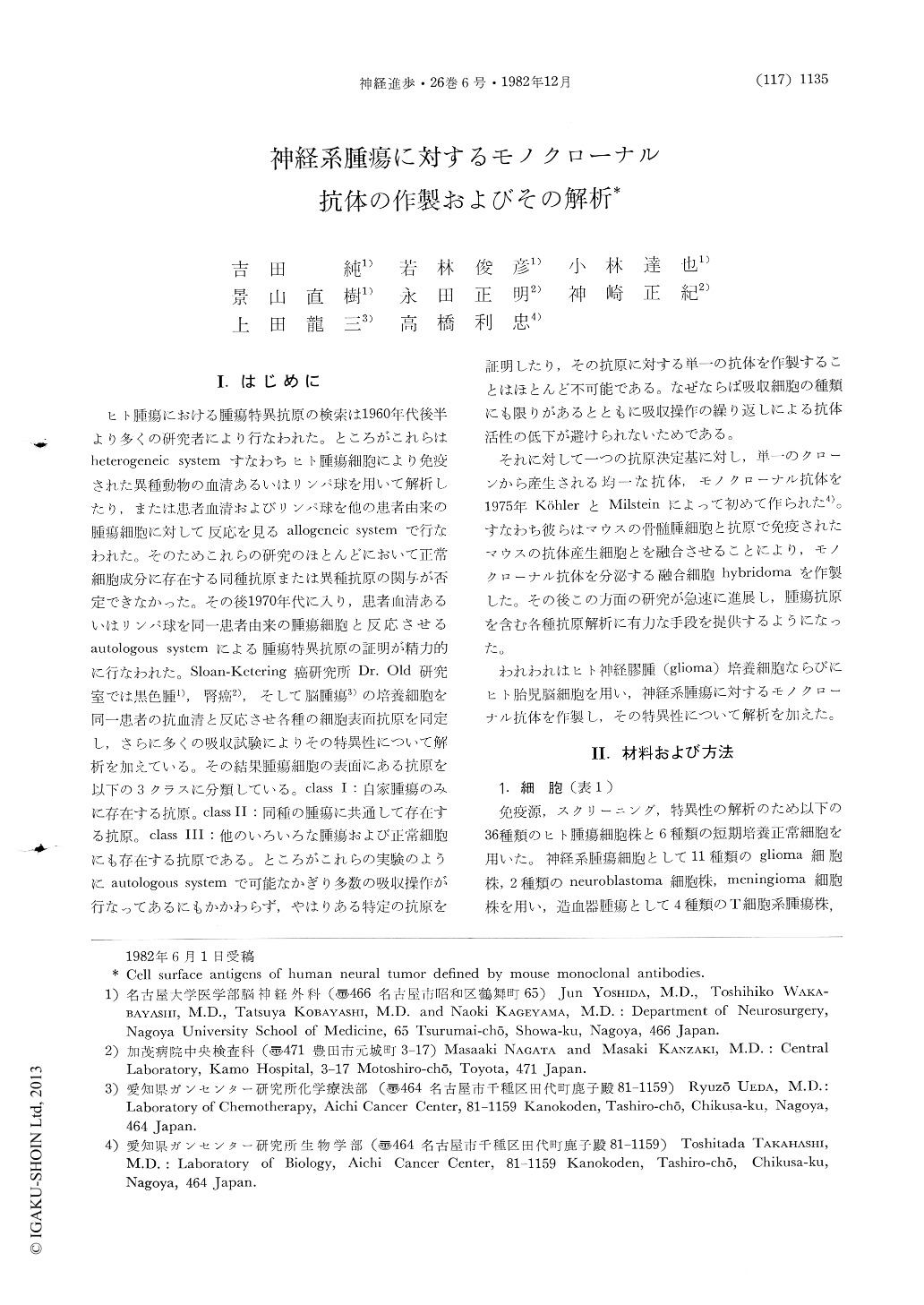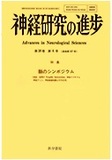Japanese
English
- 有料閲覧
- Abstract 文献概要
- 1ページ目 Look Inside
I.はじめに
ヒト腫瘍における腫瘍特異抗原の検索は1960年代後半より多くの研究者により行なわれた。ところがこれらはheterogeneic systemすなわちヒト腫瘍細胞により免疫された異種動物の血清あるいはリンパ球を用いて解析したり,または患者血清およびリンパ球を他の患者由来の腫瘍細胞に対して反応を見るallogeneic systemで行なわれた。そのためこれらの研究のほとんどにおいて正常細胞成分に存在する同種抗原または異種抗原の関与が否定できなかった。その後1970年代に入り,患者血清あるいはリンパ球を同一患者由来の腫瘍細胞と反応させるautologous systemによる腫瘍特異抗原の証明が精力的に行なわれた。Sloan-Ketering癌研究所Dr. Old研究室では黒色腫1),腎癌2),そして脳腫瘍3)の培養細胞を同一患者の抗血清と反応させ各種の細胞表面抗原を同定し,さらに多くの吸収試験によりその特異性について解析を加えている。その結果腫瘍細胞の表面にある抗原を以下の3クラスに分類している。class I:自家腫瘍のみに存在する抗原。class II:同種の腫瘍に共通して存在する抗原。class III:他のいろいろな腫瘍および正常細胞にも存在する抗原である。
Cell surface antigens of human neural tumor cells were studied by producing monoclonal antibodies. From three fusion of NS-1 myeloma cells with spleen cells obtained from mice immunized with two human malignant glioma cell lines (U 251-MG, MG178) and human fetal brain cells, 505 hybrids were grown and 70 antibody-producing clones were obtained by screening culture supernatants with immune adherence and protein A assays.
Eight hybrids that produced monoclonal antibodies, were isolated by cloning with limiting dilution and four clones (G-1, G-10, G-17, F-6) were selected for detail analysis.

Copyright © 1982, Igaku-Shoin Ltd. All rights reserved.


